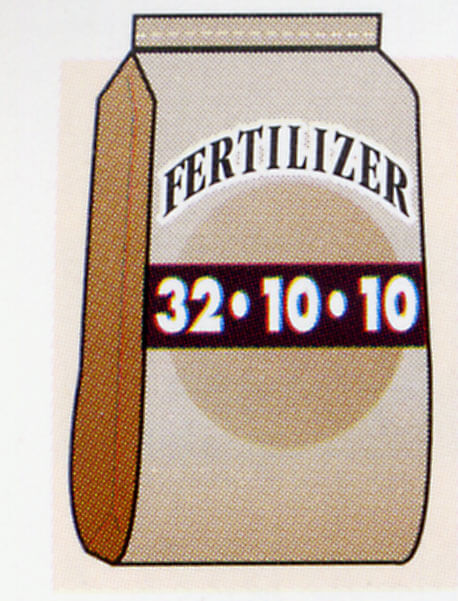Understanding Lawn Fertilizer – The N-P-K Explained
 Have you ever driven by a neighbour’s place and been amazed by the brilliant green of their lawn, whereas other lawns in the area are not showing up as well, maybe a little yellow colour showing, even browning off in places. What could be the difference? What is the one guy doing over the other?
Have you ever driven by a neighbour’s place and been amazed by the brilliant green of their lawn, whereas other lawns in the area are not showing up as well, maybe a little yellow colour showing, even browning off in places. What could be the difference? What is the one guy doing over the other?
Well, without knowing exactly the individual circumstances, I would venture to guess that “Mr Green” was using copious quantities of two things; namely fertilizer and water. He’s almost certainly broadcasting liberal amounts of a granular fertilizer with a quality fertilizer spreader such as the Earthway 2150 Commercial 50-Pound Walk-Behind Broadcast Spreader.
The water is pretty self-explanatory, but what about fertilizer? I’m sure you’ve wandered around your local greenhouse and seen the array of fertilizers for sale, along with extravagant promises and pictures of manicured lawns. And what do all those numbers on the bags mean?
Let me simplify it all for you. There are basically two types of fertilizers;
- The Organic Type – This is found in decaying plant material, such as compost etc, and in animal manure.
- Manufactured Fertilizer – This is the type you’ll see in stores, usually in a granular form, but sometimes a liquid, and will always be labelled with three numbers, e.g 10-10-10
For this series I’ll concentrate of explaining the mystery of the basic elements of manufactured fertilizer, and in particular what those confusing numbers mean, and what you should be looking for when making a purchase of fertilizer that you can easily apply to get your lawn looking as good as “Mr Green” up the street.
All fertilizers contain the same elements, or numbers, but the organic type is a whole different scenario, and best left to a complete series by someone more knowledgeable than I am.
First the numbers, the “N – P – K”
 Every fertilizer contains three basic elements, and each is essential to the proper growth of all plant life. These are known as the N-P-K analysis of the product, and are always expressed in that order. Each element is uniquely different and serves as a building block in the foundation of the plant’s growth.
Every fertilizer contains three basic elements, and each is essential to the proper growth of all plant life. These are known as the N-P-K analysis of the product, and are always expressed in that order. Each element is uniquely different and serves as a building block in the foundation of the plant’s growth.
What do they stand for & what do they do?
N is for Nitrogen
P is for Phosphorous
K is for Potassium
Let’s look at each element in turn, and see why it’s important you understand each function.
First the “N’ – the Nitrogen…
Read More at Understanding Lawn Fertilizer – Nitrogen








